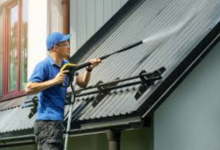Energy saving solutions: some ideas

For several years now, as awareness of environmental sustainability issues has increased, there has been a concomitant growing interest in all those solutions that could be useful from an energy-saving perspective. Saving energy does not only mean saving money, but also and above all reducing the negative impact on the environment. After all, it is a fact: the more energy we consume, the greater the risk of environmental impact.
There are various solutions for saving energy and it is certainly not possible to cover them all, so we will limit ourselves to briefly illustrating some of the most interesting ones, such as implementing a smart grid system and a smart meter, roof insulation and heat pumps.
Smart grid and smart meter
When we speak of a smart grid, we are referring to an advanced electricity distribution system that uses digital and communication technologies to help manage energy demand and production as efficiently as possible.
The fundamental aim of these innovative grids is to make increasingly rational use of energy by avoiding waste or overloading. Whereas in the case of so-called traditional electricity grids, where the consumer is merely a passive receiver of energy (one-way communication), in the smart grid the customer also becomes an active part of the process.
This is made possible by the presence of smart meters, tools that enable two-way communication between the company providing the electricity service and the end customer. The use of smart grids (and therefore smart meters) reduces operating costs, allows monitoring of the electricity grid, optimises maintenance, and makes the end consumer aware of consumption and waste by also providing them with real-time measurements. This results in improved consumer behaviour with consequent energy savings.
Roof insulation
A roof without thermal insulation is usually characterised by excessive heat loss in the colder months. In addition, the lack of insulation results in excessive heat penetrating into the home in the summer season. Thermal currents, in fact, always move in the direction of the temperature gradient or, in other words, from the warmer to the colder environment.
Roof insulation effectively solves the problem of heat loss, proving to be an interesting solution in terms of energy efficiency. Roof insulation can be carried out as an intervention in itself or in conjunction with other projects, such as the installation of photovoltaic panels.
There are many materials that are used for roof insulation, such as resins, polystyrene, glass wool, plant fibres, cork, etc. It should be noted that thermal insulation also reduces noise pollution.
Roof insulation saves electricity, as a result of less use of air conditioners in summer and natural gas because it involves less use of the heating system in winter.
Wall insulation
Wall insulation is conceptually similar to roof insulation. This can be carried out inside the house, outside the house or, if there is one, by using a cavity. This is a particularly efficient solution from an energy-saving point of view because it drastically reduces heat loss. The most efficient method is external thermal insulation, sometimes referred to as thermal insulation or thermal coat.
Wall insulation takes the form of the application of panels made of insulating material, protecting the structure from heat and cold. In addition to the not inconsiderable energy saving, it must be taken into account that this intervention increases the economic value of the building. Moreover, thermal insulation of the walls also protects them from humidity, mould and water infiltration.








